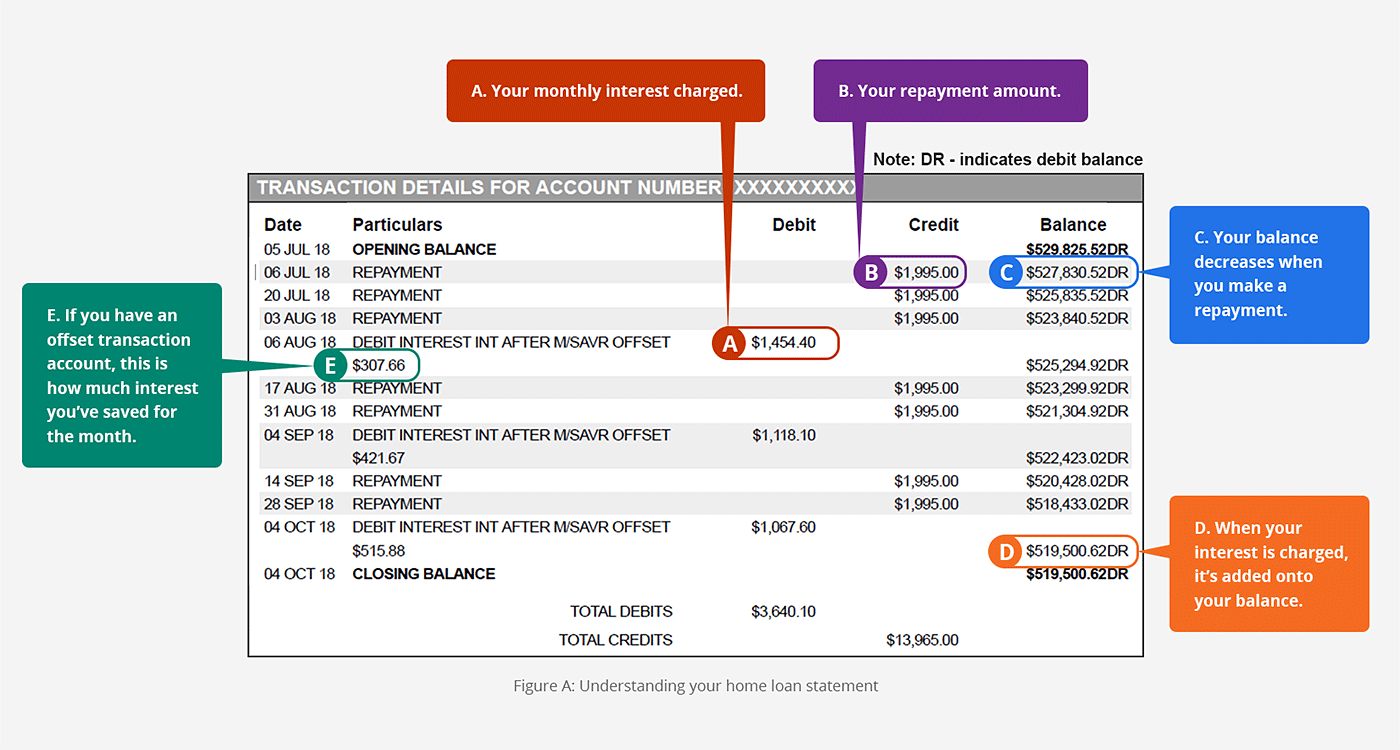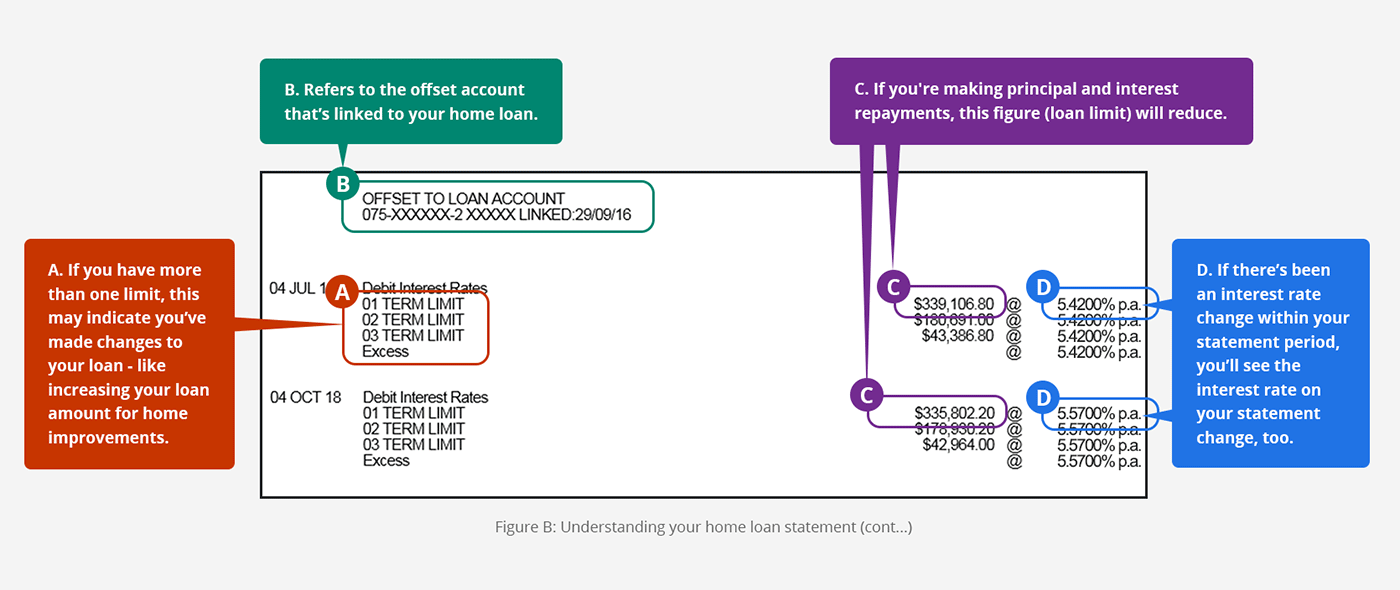How to understand your home loan statement
On This Page


Understanding your home loan statement
Key information
Your home loan limit
Your home loan limit is the total loan amount you’ve borrowed, and it will reduce over the remaining contract period. Your limit doesn’t reflect any extra repayments you may have made.
Your home loan balance
The balance is what you’re currently being charged interest on, and the amount will fluctuate based on the following:
- Your repayments
- The interest charged
- How much you have in your offset account.
If you make extra repayments, it will be reflected on your balance, so your balance will be lower than your limit. The difference is known as your available surplus, which you can see by checking your account balance in the app or online banking.
Common questions
If you have a principal and interest home loan, you’ll be given a minimum monthly repayment amount (MMR) which is made up of two parts - principal (the loan amount) and interest.
Each month on the due date, you’ll see a transaction called ‘Debit Interest’ appear on your loan account, which is the first part of your MMR.
The reason that the principal amount doesn’t show as a transaction is because it’s not a charge to your loan. While the interest amount is being deducted from the repayment amount, the principal portion is being reduced from the remaining limit on your loan.
You’ll notice your loan limit decrease the business day following your due date.